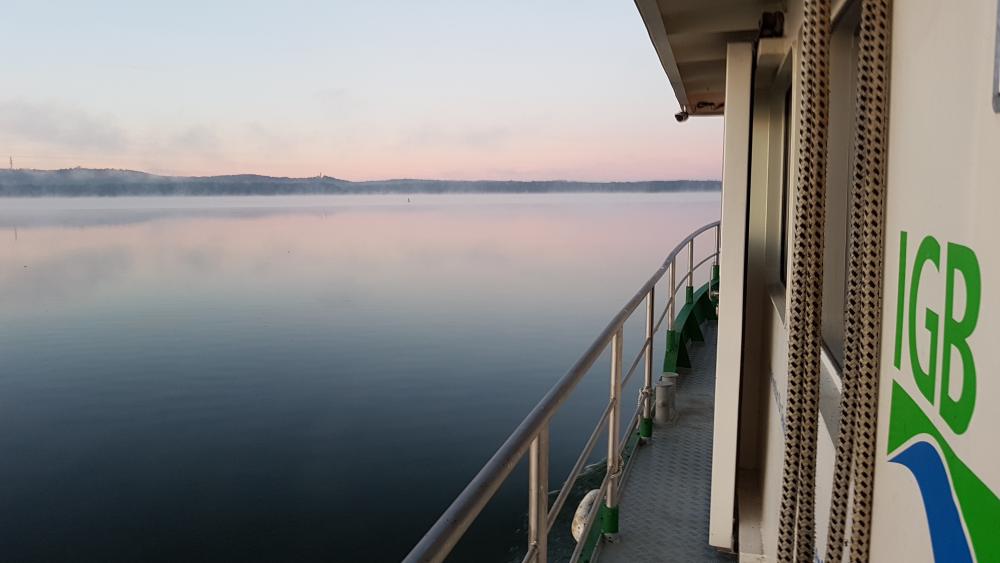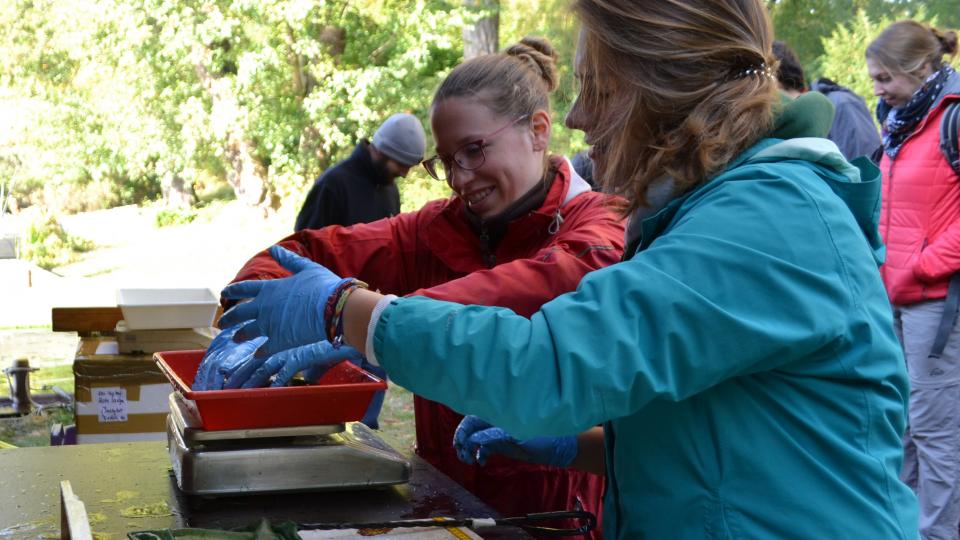
IGB’s research vessel Paulus Schiemenz headed out onto the lake even before sunrise. | Photo: Thomas Mehner
In uneven years (2015 and 2017), the researchers use multi-mesh gillnets to fish the lake; in odd years (2016 and 2018), they deploy bottom trawls and electric fishing gear. All fish caught in the nets are immediately measured and weighed on board the research vessel Paulus Schiemenz, and then released back into the water.*
Such long-term data on fish are very rare in the world. Only a few institutes can ensure the long-term provision of the necessary equipment and the commitment of so many individuals. And yet the information gained is of considerable interest to researchers: fish respond to global environmental change such as rising water temperatures, making them important indicators. Since fish have long life cycles, however, their response to change is highly delayed, sometimes becoming apparent only ten or more years after the onset of change.
At IGB, we can combine these data series with measurements taken from the water and the air that are regularly recorded by our Müggelsee Monitoring Station. For instance, the results show the effects of the decrease in nutrient contamination of the lake: while the roach was the dominant fish species when the lake was fished in the reference year 2001, this role is now played by the perch. At the same time, aquatic plants (macrophytes) have increasingly become established in the Lake Müggelsee. These trends are typical of many through-flowing lakes in northeastern Germany.
Regular surveys of fish populations are also useful for practitioners: changes in the composition of species and sizes have an impact on yields in inland fisheries and angling. For this reason, all data can be accessed from IGB’s database FRED. Any interested individuals can check here to see which species can be found in the Lake Müggelsee, how big the fish get, and how individual populations have developed over time.
* With the permission of the Fischereiamt and with a shipping police permit.
On board, the netted fish were measured and weighed, and then released back into the wild. | Photo: Asja Vogt
The zander is currently the lake’s most common predator, but there is also a relatively large number of perch, like the one in this photo. | Photo: Asja Vogt

Makes an interesting change: many young researchers are eager to support this campaign. | Photo: Asja Vogt





